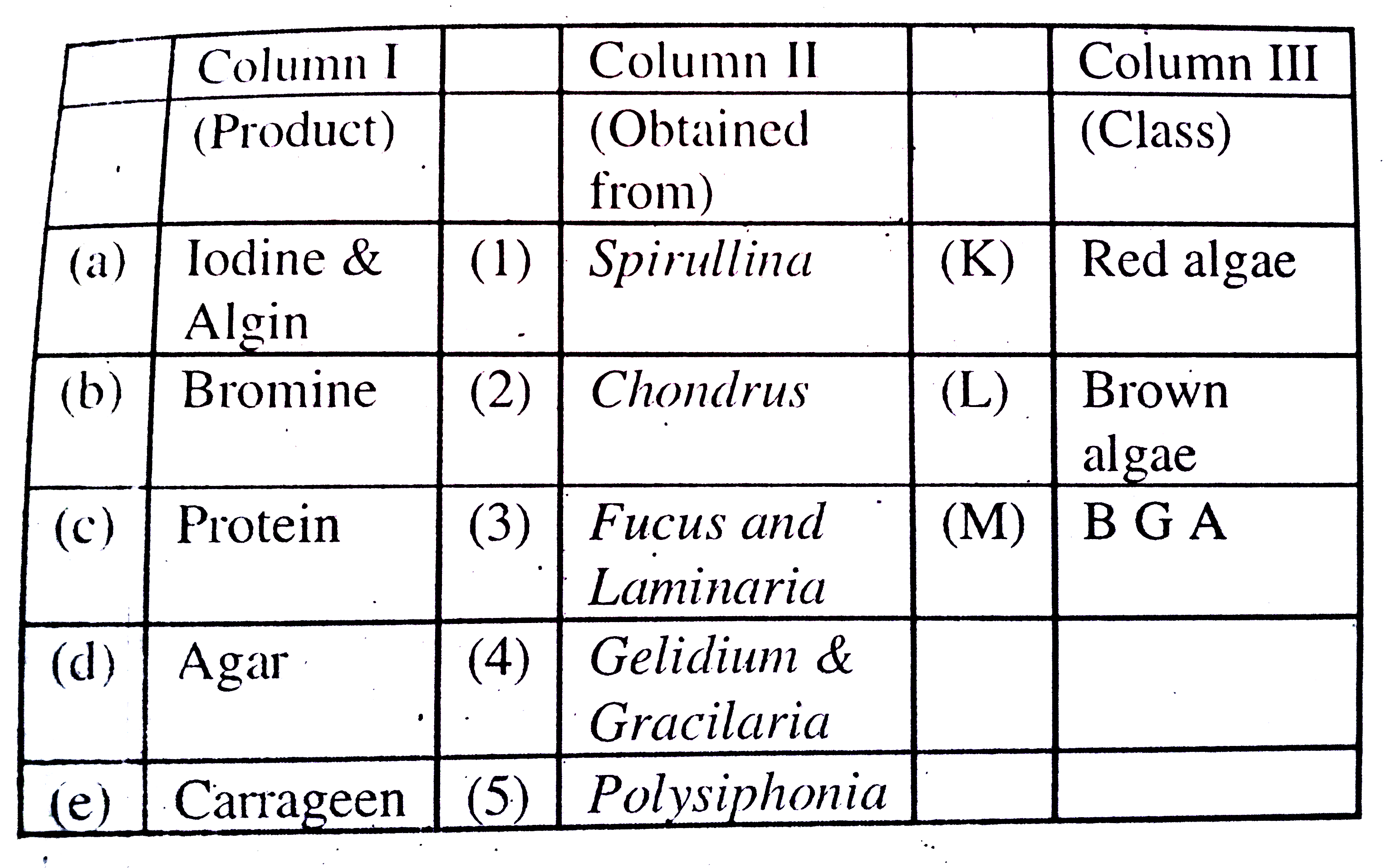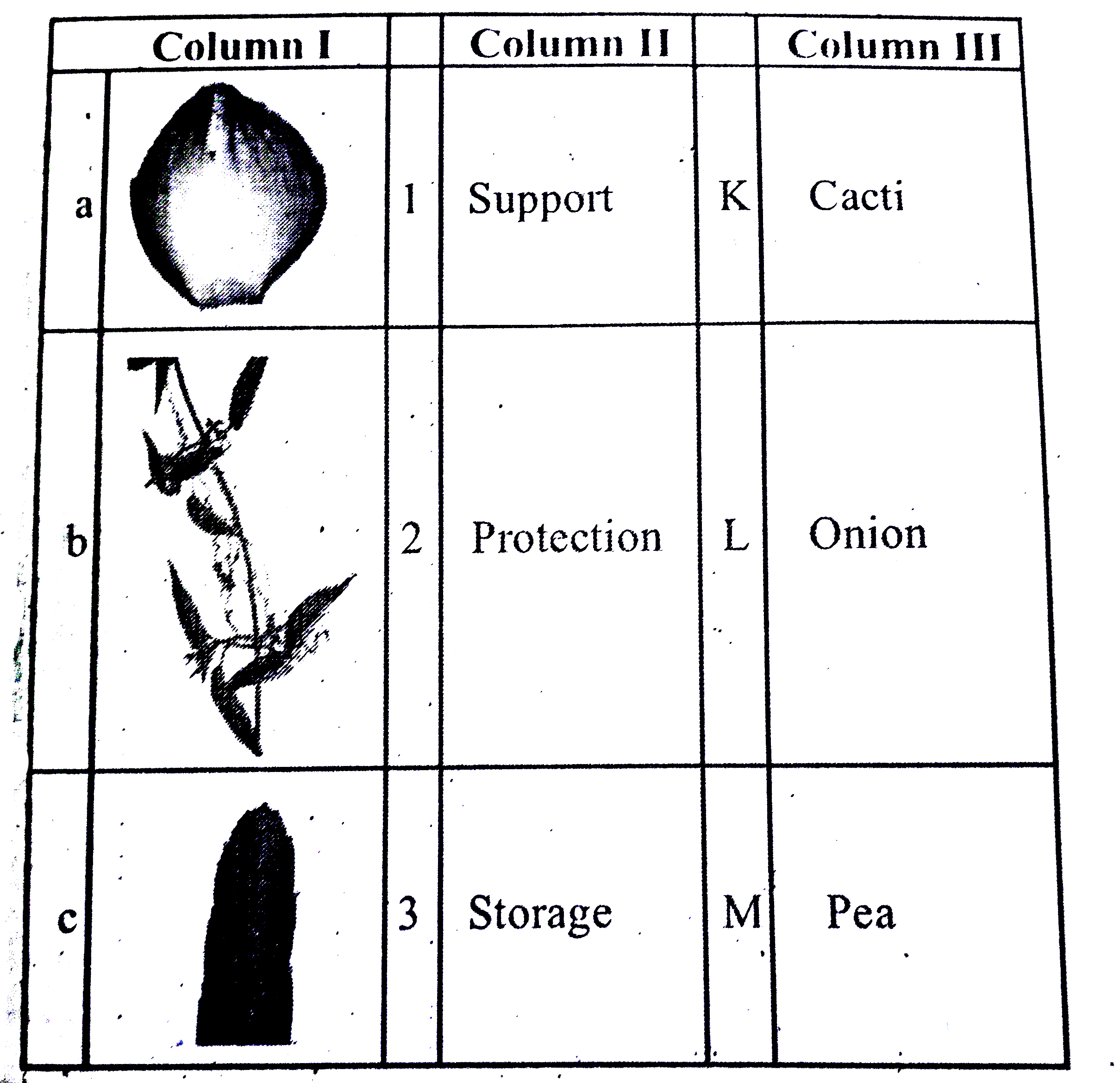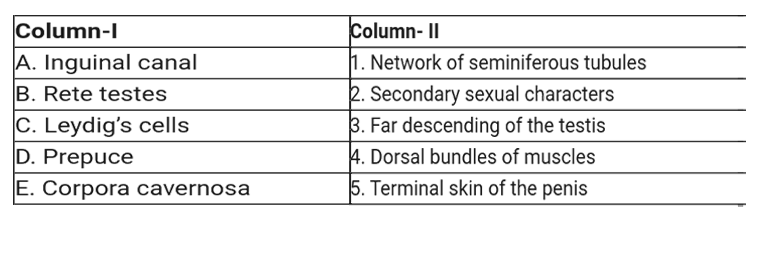Match the columns I and II, and choose the correct combination from the options given.
Column IColumn IIi.Spongea.Monoeciousii.Leechb.Dioeciousiii.Cockroachc.Hermaphroditeiv.Frogd.Unisexualv.Date plame.Bisexual
a-I, e-ii, b-iii, d-iv, b-v
c-I, a-ii, d-iii, b-iv, b-v
e-I, c-ii, b-iii, d-iv, b-v
All of the above
The correct Answer is:D
To solve the matching question, we need to identify the correct reproductive classification for each organism listed in Column I and match it with the appropriate term in Column II. Here’s a step-by-step breakdown:
Step 1: Understand the Terms in Column II
1. Monoecious: Organisms that have both male and female reproductive organs in the same individual.
2. Dioecious: Organisms that have male and female reproductive organs on different individuals.
3. Hermaphrodite: Similar to monoecious; organisms that possess both male and female reproductive organs in the same individual.
4. Unisexual: Organisms that are either male or female, but not both.
5. Bisexual: Organisms that have both male and female reproductive organs in the same individual (synonymous with hermaphrodite).
Step 2: Analyze Each Organism in Column I
1. Sponge: Sponges are known to be hermaphroditic, meaning they have both male and female reproductive organs. Thus, it can be classified as Monoecious (a).
2. Leech: Leeches are also hermaphroditic, possessing both male and female reproductive organs. Therefore, they are classified as Monoecious (a) or Bisexual (e).
3. Cockroach: Cockroaches are dioecious, meaning they have distinct male and female individuals. Thus, they are classified as Dioecious (b).
4. Frog: Frogs are also dioecious, with separate male and female individuals. Hence, they are classified as Dioecious (b).
5. Date Palm: Date palms are dioecious, with male and female flowers on separate plants. Therefore, they are classified as Dioecious (b).
Step 3: Match the Organisms with the Correct Terms
- Sponge: Monoecious (a)
- Leech: Monoecious (a) or Bisexual (e)
- Cockroach: Dioecious (b)
- Frog: Dioecious (b)
- Date Palm: Dioecious (b)
Step 4: Present the Final Matches
Based on the analysis:
- (i) Sponge - (a) Monoecious
- (ii) Leech - (a) Monoecious or (e) Bisexual
- (iii) Cockroach - (b) Dioecious
- (iv) Frog - (b) Dioecious
- (v) Date Palm - (b) Dioecious
Final Answer
The correct combinations are:
- (i) Sponge - (a)
- (ii) Leech - (a) or (e)
- (iii) Cockroach - (b)
- (iv) Frog - (b)
- (v) Date Palm - (b)
1. Monoecious: Organisms that have both male and female reproductive organs in the same individual.
2. Dioecious: Organisms that have male and female reproductive organs on different individuals.
3. Hermaphrodite: Similar to monoecious; organisms that possess both male and female reproductive organs in the same individual.
4. Unisexual: Organisms that are either male or female, but not both.
5. Bisexual: Organisms that have both male and female reproductive organs in the same individual (synonymous with hermaphrodite).
1. Sponge: Sponges are known to be hermaphroditic, meaning they have both male and female reproductive organs. Thus, it can be classified as Monoecious (a).
2. Leech: Leeches are also hermaphroditic, possessing both male and female reproductive organs. Therefore, they are classified as Monoecious (a) or Bisexual (e).
3. Cockroach: Cockroaches are dioecious, meaning they have distinct male and female individuals. Thus, they are classified as Dioecious (b).
4. Frog: Frogs are also dioecious, with separate male and female individuals. Hence, they are classified as Dioecious (b).
5. Date Palm: Date palms are dioecious, with male and female flowers on separate plants. Therefore, they are classified as Dioecious (b).
- Sponge: Monoecious (a)
- Leech: Monoecious (a) or Bisexual (e)
- Cockroach: Dioecious (b)
- Frog: Dioecious (b)
- Date Palm: Dioecious (b)
Based on the analysis:
- (i) Sponge - (a) Monoecious
- (ii) Leech - (a) Monoecious or (e) Bisexual
- (iii) Cockroach - (b) Dioecious
- (iv) Frog - (b) Dioecious
- (v) Date Palm - (b) Dioecious
The correct combinations are:
- (i) Sponge - (a)
- (ii) Leech - (a) or (e)
- (iii) Cockroach - (b)
- (iv) Frog - (b)
- (v) Date Palm - (b)
Topper's Solved these Questions
- REPRODUCTION IN ORGANISMS BOOK - VMC MODULES ENGLISHCHAPTER - REPRODUCTION IN ORGANISMS EXERCISE - ENABLE
50 Videos
- REPRODUCTION IN ORGANISMS BOOK - VMC MODULES ENGLISHCHAPTER - REPRODUCTION IN ORGANISMS EXERCISE - EFFICIENT
50 Videos
- PRINCIPLES OF INHERITANCE AND VARIATIOBOOK - VMC MODULES ENGLISHCHAPTER - PRINCIPLES OF INHERITANCE AND VARIATIOEXERCISE - IMPECCABLE
56 Videos
- REPRODUCTIVE HEALTHBOOK - VMC MODULES ENGLISHCHAPTER - REPRODUCTIVE HEALTHEXERCISE - Chapter Exercise-C
10 Videos
Similar Questions
Knowledge Check
Match the column I with column II and choose the correct option
 A(a) ABCD1234B(b) ABCD4321C(c) ABCD1322D(d) ABCD2314
A(a) ABCD1234B(b) ABCD4321C(c) ABCD1322D(d) ABCD2314
Match the columns I and II, and choose the currect combination from the options given :-

View SolutionMatch the columns I, II and III, and choose the correct combination from the options given :-

View SolutionMatch the column I, II and III and choose the correct combination from the options given :-

View SolutionMatch the columns I, II and III and choose the correct combination from the option given :

View SolutionMatch the columns I,II and III and choose the CORRECT combination, from the options given.

View SolutionMatch the columns I and II, and choose the correct combination from the options given.
Column IColumn IIi.Coconuta.Monoeciousii.Papayab.Dioeciousiii.Tapewormiv.Earthworm
View SolutionMatch the column I with column II and choose the correct option

View Solution



